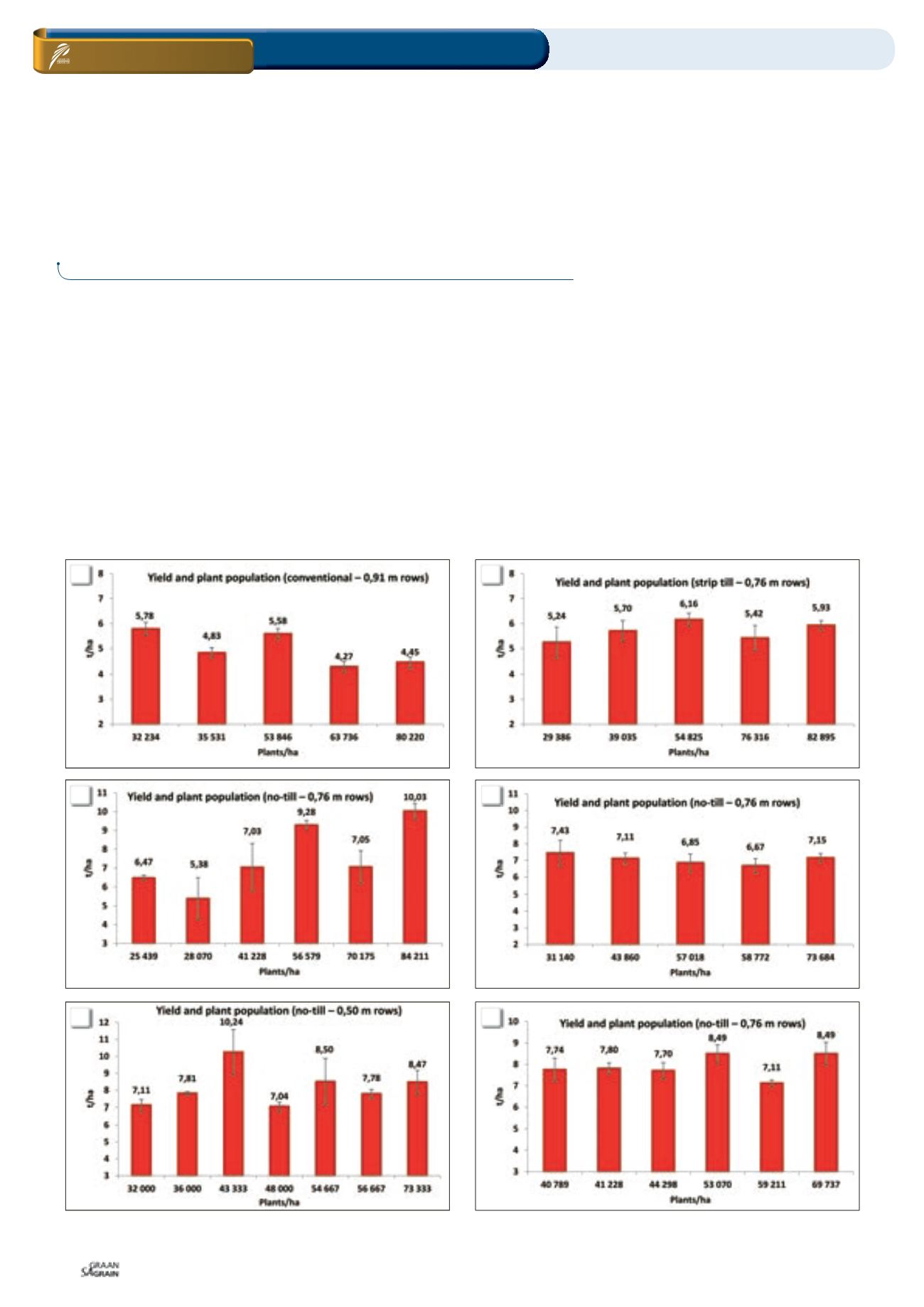

Maart 2017
96
CA RESEARCH
in the north eastern Free State
G
rain SA initiated a conservation ag-
riculture (CA) research project in
the Vrede area with producer col-
laboration from the Ascent Study
roup. Other role-players such as VKB,
ARC and Vermi Solutions also got involved
to assist with different technical aspects of
the project, which were started during the
planting season of 2015/2016. The project is
funded by the Maize Trust.
The producers decided that demonstrative
type of trials would suit them best. Strip tri-
als were thus planted by a few producers
who used different tillage practices on their
various farms. The focus was on maize, but
soybeans were also planted.
Plant density (which is here used as a func-
tion of plant population and row width) was
identified as one of the key crop produc-
tion elements to be investigated. Maize row
widths that were investigated on different
farms consisted of the following: 0,91 m,
0,76 m and 0,5 m rows.
There are various reasons for plant density
to be of particular interest to CA projects
such as this, the main reason being that
covering of the soil and most effective use
of sunlight energy and water are of utmost
importance in CA systems.
Conventional wisdom suggests that higher
canopy cover and hence radiation inter-
ception and green water use (water loss or
use through transpiration by plants) will be
more effective under higher crop density
conditions.
Another important consideration is the spa-
tial distribution of roots in the soil that is
affected by row width. The better the roots
are spatially distributed the better the water
and nutrient uptake in the entire soil profile,
ON FARM LEVEL
Research project / Plant density / Tillage practices
Conservation agriculture
ROBERT STEYNBERG,
senior agronomist, VKB and
HENDRIK SMITH,
CA facilitator, Grain SA
Graph 1a - 1f: Relationship between maize yield and plant population
when different tillage practices and row widths were used.
1a
1c
1e
1b
1d
1f

















